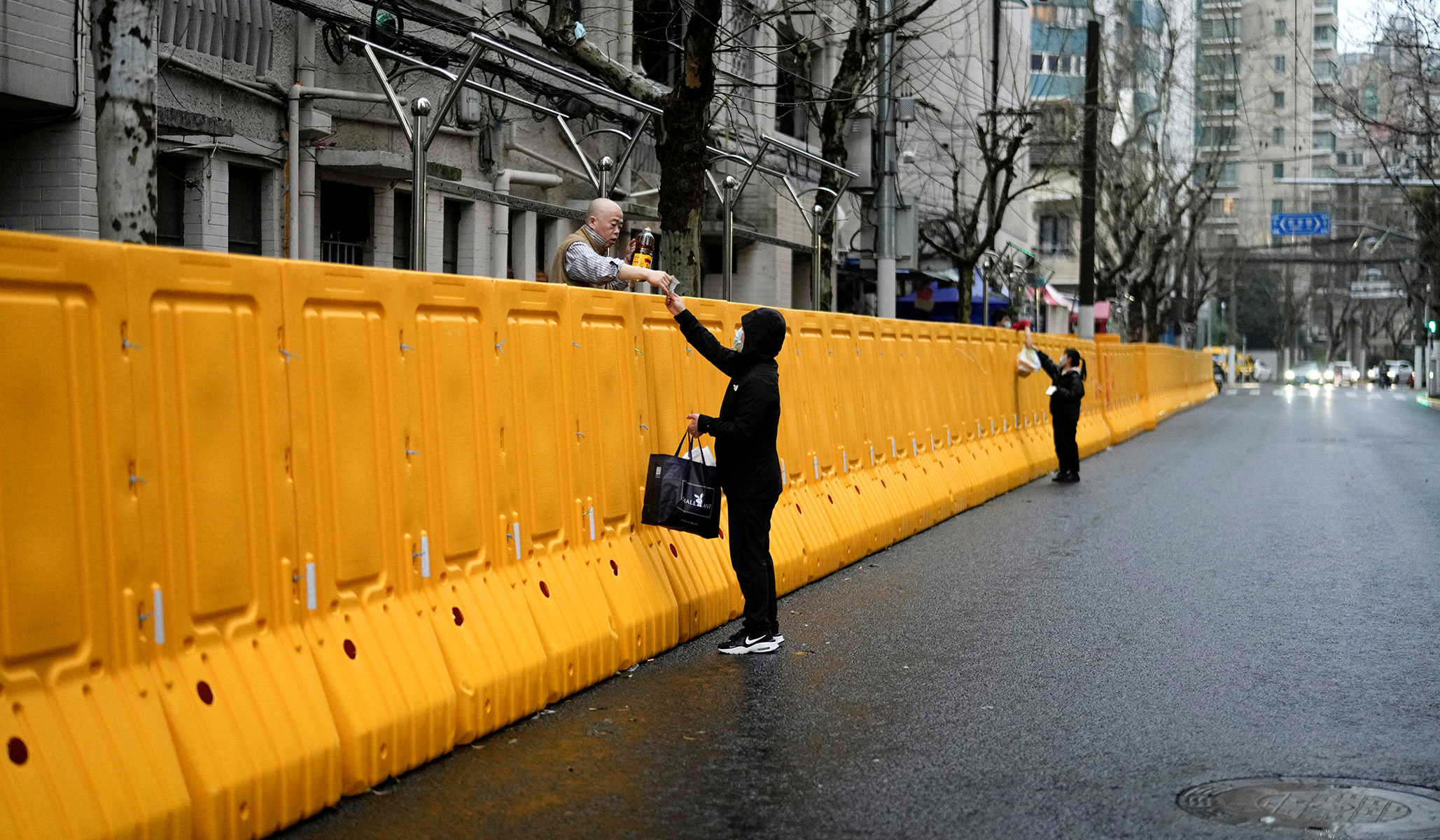 |
| EPA/AFP via Getty Images |
For over two weeks the financial capital of China, Shanghai, has been locked down tight. Some 26 million people languish in their apartments, staring at their now-empty refrigerators, unable to set foot outside to forage for food for fear of arrest and incarceration.
Foreigners are in the same predicament, as one complained on Twitter:
Day 16 of our COVID lockdown in Shanghai today and food is the key thing on people’s minds. We aren’t allowed to leave home so delivery is the only way I was up at 6 am yesterday trying to get any kind of delivery but nothing was available all day. So far, same results today
Yet the homebound are the lucky ones.
The unlucky ones are those who test positive for COVID each day, like the 17,077 Shanghainese who did on Wednesday. Symptomatic or not — and nine out of 10 show no signs of illness — they are hauled off to hastily erected quarantine camps.
The Shanghai lockdown, the largest since the first Wuhan lockdown two years ago, is China’s latest attempt to achieve COVID Zero. An army of health care workers, some 38,000 in all, have been sent to Shanghai, with instructions to completely stamp out the coronavirus within the city. They are frantically testing and retesting everyone. --->READ MORE HERE
 |
| Aly Song/Reuters |
I can remember when James Palmer, the deputy editor of Foreign Policy, jabbed at me for calling China’s official Covid-19 statistics “insanely implausible,” insisting, “China did, in fact, get the pandemic under control with draconian lockdowns. Pretending that didn’t happen just reinforces the belief of the Chinese public in Western bias and prevents them accepting *good* coverage. That you don’t like it doesn’t mean it didn’t happen.”
Whatever else you want to say about Palmer, he does keep a close eye on China, and he wrote up this update of how the lockdowns are going:
The entirety of Shanghai is now under lockdown after a previous experiment to shut the city down one half at a time failed to contain a growing COVID-19 outbreak. Some residents have now been under lockdown for over three weeks, with a succession of smaller lockdowns limited to particular districts or compounds. In China, lockdowns are stricter than in many other countries: It can entail a complete ban on leaving one’s home or being limited to one excursion every few days for food.Follow links below to relevant/related stories and resources:
National coronavirus cases continue to climb steadily, with numbers doubling roughly every five days. Shanghai remains the epicenter of the outbreak, with over 83 percent of cases, although numbers are also growing in neighboring provinces. Mass testing in the city is uncovering a very high number of asymptomatic cases, suggesting that other regions with lower rates of testing probably have large numbers of undetected cases. (China also uses a very particular definition of “asymptomatic” cases, excluding many that would be considered symptomatic in other countries.) The number of deaths remains officially very low, though deaths in old age facilities are likely being underreported. --->READ MORE HERE
Where liberals look to divide: Culture, COVID-19 and the Constitution
The next leap in coronavirus vaccine development could be a nasal spray
USA TODAY: Coronavirus Updates
WSJ: Coronavirus Live Updates
YAHOO NEWS: Coronavirus Live Updates
NEW YORK POST: Coronavirus The Latest
If you like what you see, please "Like" and/or Follow us on FACEBOOK here, GETTR here, and TWITTER here.

No comments:
Post a Comment